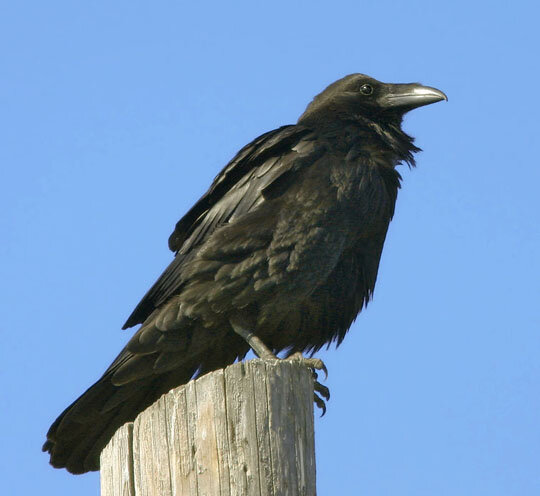Common Raven
Corvus corax
Ravens appear “playful” in the air, swooping, falling, rolling. Much of this activity is part of their courtship maneuvering. They alternately flap and soar like a hawk. Breeding pairs tend to stay in their territory year-round. Ravens are often part of Native American stories.
Description:
A large black bird with a purplish, glossy sheen. They are 22–27 inches (56–69 cm) in length with a wedge-shaped tail and long-pointed wings. The wingspan is 4–4 ½ feet. They have a thick bill. The feet and bill are black.
Voice:
Common call a very low gronk; also a croaking, resonant cark cark.
Food:
Ravens are opportunistic scavengers, feeding on carrion. They are omnivorous, eating shellfish, rodents, insects, seeds, fruit, bird eggs and food scraps. They also cache food.
Nest:
A large, bulky, loose nest of sticks and bones, lined with a soft material such as wool. Nest built on cliffs, up in trees or power poles. The 3-8 eggs are olive or drab, spotted and blotched with brown or lavender.
Habitat:
Live in a variety of habitats, including deserts, mountains, forests, canyons and Pacific coast beaches. Prefers open country.
Range:
Found throughout the west and across Canada to Greenland; south to Central America.
Migration:
Year-round resident.
Comments:
Closely-related crows are also a glossy, all black bird. However, they are smaller than ravens (17-21 in; 43-53 cm). They also have shorter, less powerful bills. Their tails are square or slightly rounded. Voice is a caw, not as hoarse as that of a raven. Crows are residents near Idyllwild.
Photo Courtesy of Tom Grey
3/10/21/ok


